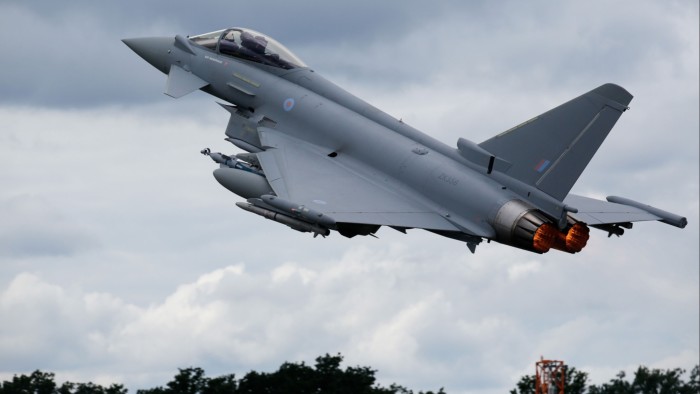Unlock the Editor’s Digest for free
Roula Khalaf, Editor of the FT, selects her favourite stories in this weekly newsletter.
The writer is head of non-ferrous metals pricing at Argus Media
Europe’s newfound enthusiasm for military spending is colliding with some extraordinary price surges in some not so well-known crannies of commodities markets. Many niche metals needed for everything from bullets to advanced fighter aircraft are facing acute supply squeezes and stiff competition from other metal-hungry industries.
Politicians need to understand the challenges and take into account how high a price weapons manufacturers may have to pay to get the ingredients they need, and the ripple effect that further demand and price hikes will have on civilian end users of these metals.
The first cause for concern must be antimony — used to harden lead bullets and make flame-retardant materials. Once traded comfortably below the $15,000-a-tonne mark in Europe, antimony has jumped in price by about 375 per cent since the start of 2024 because of a global feedstock shortage and Chinese export controls that came into effect in September 2024.
The current price of duty-unpaid material in Europe’s principal Rotterdam hub is $56,000-$58,000 a tonne. With no quick way to bring more supply from outside into play, the squeeze is unlikely to end soon. Fierce competition for materials is likely to guarantee unusually high antimony prices for the foreseeable future.
This same issue of supply-chain inelasticity recurs many times in metals markets right across the periodic table. Rhenium — a high-temperature minor metal used in alloys to make high-pressure turbine blades for jet engines — startled many last summer when its prices suddenly shot up after barely moving for years. The cause? A huge wave of purchasing by China colliding with rising demand from the aerospace and medical industries elsewhere, and a supply base that simply couldn’t keep up. Rotterdam prices for catalyst grade rhenium ammonium perrhenate (minimum 69.4 per cent of the metal) have almost doubled year on year to $1,800-1,900/kg. Rhenium has several uses in the medical industry such as making implants, cancer detection, radiotherapy and treating bone pain.
The rhenium rally had echoes of hafnium just a year earlier. This is another high-temp minor metal, used by the aerospace industry in superalloys. It underwent an extraordinary rally from April 2022 to August 2023, as buyers from the aerospace and electronics industries went out shopping after Covid-19.
Not only that but the electronics sector was booming, and a number of new applications were under development for the metal. As with rhenium, supply couldn’t keep up. The global benchmark, assessed by Argus, peaked at $6,950/kg with duty unpaid at Rotterdam in August 2023 and still remains way above historic norms at $3,700-3,900/kg. For context, hafnium had spent many years trading at around $750-1,200/kg.
The lack of visibility and understanding of opaque “critical mineral” markets means supply-chain vulnerabilities can be overlooked and fundamentals driving price movements misunderstood.
A natural question is: why can’t we just increase supply? Inevitably, the biggest problem is usually money. Even when prices are high, it can be tough to make the economic case for investing in bringing more supply online, in part because minor metals are usually by-products of the refining of other metals.
Hafnium is particularly niche — a byproduct of a byproduct, zirconium, the availability of which is often shaped by the nuclear industry. A processing plant needs to extract 50 tonnes of zirconium to get just one tonne of hafnium, so it is not always profitable for zirconium producers to ramp up their hafnium output even if demand for the latter is strong.
The list of metals needed by the defence industry goes on — tungsten, titanium, chromium, tantalum, niobium, cobalt, molybdenum, vanadium. There are the “tech metals” such as gallium and germanium used to make compound semiconductors and infrared lenses. And of course rare earths, which find their way into missile guidance systems, night-vision goggles and fighter jets.
All have challenging supply chains. Many are caught up in geopolitics: China’s new export controls on tungsten, alongside gallium, germanium and graphite, for example. As the world pursues more and more minor metals — for both military and civilian purposes — policymakers would do well to analyse their supply chains more closely and identify where support is needed to get more production into play. As both rhenium and hafnium illustrate, shortages can sneak up in opaque markets, and the price spikes leave buyers reeling.
https://www.ft.com/content/e56cd163-d934-4e13-ae00-0a5ddfc8514c


